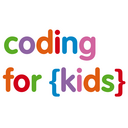Dev8D: Coding for kids: get involved!
 “Get involved, now before it’s too late” was the impassioned plea from Ben O’Steen in his Coding for Kids session as he set out the parlous state of current ICT education in schools, and suggested some positive ways forward
“Get involved, now before it’s too late” was the impassioned plea from Ben O’Steen in his Coding for Kids session as he set out the parlous state of current ICT education in schools, and suggested some positive ways forward
At first sight, the future of ICT in schools is grim. In January, the education secretary, Michael Gove, told the BETT conference that the ICT GCSE was “flawed” and “a mess” and will be discontinued, leaving the exam boards to decide what will happen next. Schools and teachers have been left in limbo, facing a bewildering choice of untried, untested syllabuses and disillusioned ICT teaching staff.
It’s a vacuum, a “big, big problem”, says Ben O’Steen. But does it, possibly, also offer an opportunity?
The old GCSE fell far short of what any developer would call credible. Pupils were required to design websites…in Powerpoint. A page layout per Powerpoint slide. According to Young Rewired State, when advanced kids tackled this part of their coursework by creating fully functional websites using HTML 5, they were failed. The system had no way of marking their work as it didn’t fall neatly into the right tick boxes.
The syllabus was irrelevant, boring and patronising. It also failed to engage girls, many of whom had already been lost to ICT by GCSE stage. “Year eight is too late” is the mantra of Coding for Kids, which has found that you need to talk to girls about computing in years five and six when they are really enthusiastic and less concerned about it being a “boy subject” (which in itself is a reasonably new concept – around 40 years ago there was no gender imbalance in computing and before then there were more female than male programmers).
“It’s important we get involved now,” argued Ben and he and others in the session offered some starting points, hints and tips.
Ways to help schools to inspire kids about computing
Sign up for the Coding for Kids mailing list (@codingforkids) and get involved with them as a mentor.
If you’re worried about being able to talk appropriately to a bunch of younger kids (simple language, no swears) then begin by trying to do something at a careers day to get into the flow and start to get involved with teachers.
If you sign up to an organisation such as STEMnet, they will do an enhanced CRB check on you.
Helping out at afterschool clubs such as science and maths clubs gets around the frustrations of trying to work within the metrics-driven school system.
Follow Hubmum (Emma Mulqueeny) on Twitter.
Check out the Guardian’s digital literacy campaign and especially the links in Emma Mulqueeny’s How to teach code article (and there are more in the comments).
Tools to try with kids
Scratch – great to get kids enthused about games and already has a lot of traction in schools which is reassuring for those that are not yet using it (bear in mind that you may need to contact the school at least two or three months before the event to get them to install it on the computers).
Code Academy (for secondary level).
Text adventure programming: programme in English using descriptions and you get a game (watch Ben’s Dev8D talk on text adventures). Yesterday Playfic released Inform 7 in the browser.
Storytelling Alice – good storytelling device way to learn coding.
Kodu – Coding programme for Xbox to build up games.
Lego Mindstorms – great but expensive.
Arduinos work really well in school workshops








0 Comments
Trackbacks/Pingbacks